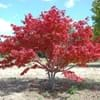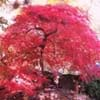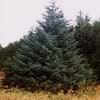Life Span
Perennial
Biennial and Perennial
Origin
Eastern Asia, China, Japan, Korea
Europe, Western Asia
Habitat
gardens, Woodland Garden Secondary, Woodlands
waste ground, wastelands
USDA Hardiness Zone
4-7
4-9
Sunset Zone
A3, 2a, 2b, 3a, 3b, 4, 5, 6, 7, 8, 9, 10, 12, 14, 15, 16, 17, 18, 19, 20, 21, 22, 23, 24
A1, A2, A3, H1, H2, 1a, 1b, 2a, 2b, 3a, 3b, 4, 5, 6, 7, 8, 9, 10, 11, 12, 13, 14, 15, 16, 17, 18, 19, 20, 21, 22, 23, 24
Habit
Oval or Rounded
Rosette/Stemless
Flower Color Modifier
-
Bicolor
Fruit Color
Red, Brown
Brown, Black
Leaf Color in Spring
Red, Burgundy, Dark Red, Copper
Green
Leaf Color in Summer
Red, Green, Bronze
Green
Leaf Color in Fall
Red, Crimson, Orange Red
Green
Leaf Shape
Palmate
Pinnate
Plant Season
Spring, Summer, Fall, Winter
Summer
Sunlight
Partial Sun, Partial shade
Full Sun
Type of Soil
Clay, Loam, Sand
Loam
The pH of Soil
Acidic, Neutral
Neutral
Soil Drainage
Average
Well drained
Bloom Time
Early Spring, Spring, Late Spring, Early Summer
Summer
Where to Plant?
Ground
Ground, Pot
How to Plant?
Budding, Seedlings, Stem Cutting
Seedlings
Plant Maintenance
Medium
Medium
Watering Requirements
Average Water Needs, Needs less watering
Average Water Needs, Do Not over Water, Keep the ground moist but not water-logged
In Summer
Lots of watering
Lots of watering
In Spring
Moderate
Moderate
In Winter
Average Water
Average Water
Soil pH
Acidic, Neutral
Neutral
Soil Type
Loam, Sand
Loam
Soil Drainage Capacity
Average
Well drained
Sun Exposure
Full Sun, Partial Sun, Partial shade
Full Sun
Pruning
Remove damaged leaves, Remove dead branches, Remove dead leaves
Remove damaged leaves, Remove dead branches, Remove dead leaves
Fertilizers
All-Purpose Liquid Fertilizer, Apply N-P-K, since leafy plants, use higher nitrogen content fertilizer
All-Purpose Liquid Fertilizer
Pests and Diseases
Aphids, Beetles, Mealybugs, Red blotch, Scale, Sooty Mold
Aphids, Armyworm, Cutworms, Downy mildew, Pitch canker, Red blotch
Plant Tolerance
Drought, Full Sun, Shade areas
Drought
Flowers
Insignificant
Showy
Flower Petal Number
Single
-
Fragrant Bark/Stem
No
Yes
Foliage Texture
Fine
Fine
Foliage Sheen
Matte
Matte
Aesthetic Uses
Bonsai, Borders
-
Beauty Benefits
-
Blood purifying, Good for skin
Environmental Uses
Air purification
Air purification
Medicinal Uses
-
Aphrodisiac
Part of Plant Used
Sap
Root
Other Uses
Used as preservative
Food for animals, Used as a nutritious food item
Used As Indoor Plant
No
Yes
Used As Outdoor Plant
Yes
Yes
Garden Design
Feature Plant, Foundation, Mixed Border
Edible, Herb, Vegetable
Botanical Name
ACER palmatum 'Skeeter's Broom'
PASTINACA sativa
Common Name
Downy Japanese Maple, Fullmoon Maple, Japanese Maple
Parsnip
In Hindi
Japanese Maple
चुकंदर
In German
japanischer Ahorn
Pastinake
In French
érable du Japon
Panais
In Spanish
arce japonés
Chirivía
In Greek
Japanese Maple
Είδος δαυκίου
In Portuguese
bordo japonês
cherivia
In Polish
Klon japoński
Pasternak
In Latin
Acer palmatum
parsnip
Phylum
Tracheophyta
Magnoliophyta
Class
Magnoliopsida
Magnoliopsida
Family
Aceraceae
Apiaceae
Clade
Angiosperms, Eudicots, Rosids
Angiosperms, Asterids, Eudicots
Importance of Japanese Maple and Parsnip
Want to have the most appropriate plant for your garden? You might want to know the importance of Japanese Maple and Parsnip. Basically, these two plants vary in many aspects. Compare Japanese Maple and Parsnip as they differ in many characteristics such as their life, care, benefits, facts, etc. Every gardener must at least have the slightest clue about the plants he wants to plant in his garden. Compare their benefits, which differ in many ways like facts and uses. The medicinal use of Japanese Maple is whereas of Parsnip is Aphrodisiac. Japanese Maple has beauty benefits as follows: while Parsnip has beauty benefits as follows: .
Compare Facts of Japanese Maple vs Parsnip
How to choose the best garden plant for your garden depending upon its facts? Here garden plant comparison will help you to solve this query. Compare the facts of Japanese Maple vs Parsnip and know which one to choose. As garden plants have benefits and other uses, allergy is also a major drawback of plants for some people. Allergic reactions of Japanese Maple are whereas of Parsnip have Stomach burn respectively. Having a fruit bearing plant in your garden can be a plus point of your garden. Japanese Maple has no showy fruits and Parsnip has no showy fruits. Also Japanese Maple is not flowering and Parsnip is not flowering . You can compare Japanese Maple and Parsnip facts and facts of other plants too.





